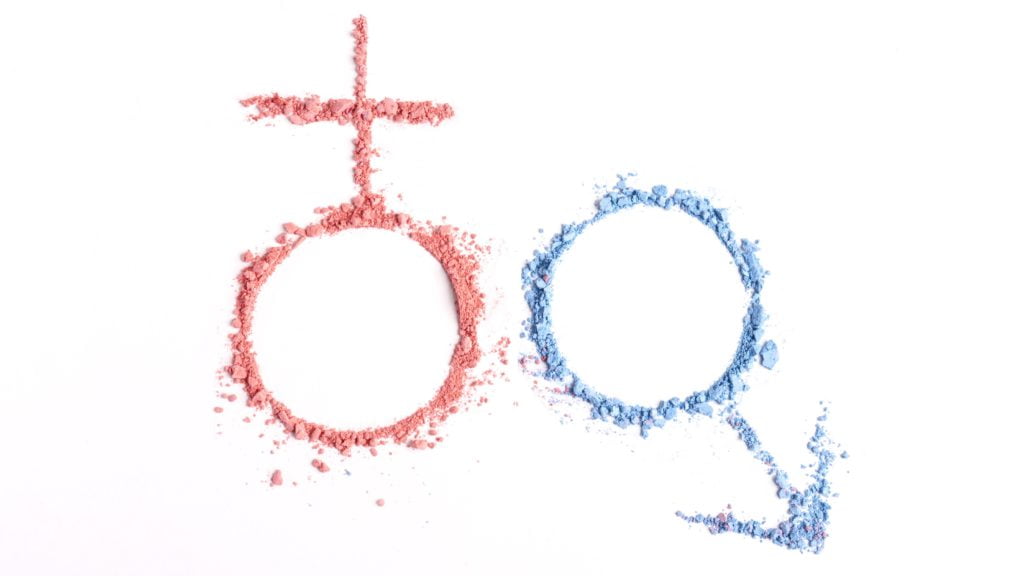
Gender selection through IVF, a groundbreaking option legal in Cyprus, allows couples to choose their future child’s gender for family balancing or personal reasons. This concise guide covers the essential methods, success rates, and ethical considerations, offering valuable insights for those considering this advanced reproductive choice.

Methods of Gender Selection with IVF
Gender selection with in vitro fertilization (IVF) involves the use of various methods to choose the gender of a baby before conception. These methods primarily rely on the genetic selection of embryos to achieve the desired gender. Here are the most commonly used methods of gender selection with IVF:
Preimplantation Genetic Testing for Gender Selection (PGT-GS):
This is the most widely used and accurate method for gender selection during IVF.
After fertilization, when embryos are still in the early stages of development (typically around day 5 or 6), a few cells are biopsied from each embryo.
These cells are then genetically tested to determine the gender of each embryo. Only embryos of the desired gender are selected for implantation, increasing the chances of achieving the desired gender outcome.
This method’s success rate is higher than others, nearly 99%.
Ericsson Method (Sperm Sorting):
This method is used prior to IVF and involves separating sperm based on their X or Y chromosomes.
X-bearing (female) sperm are thought to be slower but more resilient than Y-bearing (male) sperm.
By sorting sperm, the chosen gender can be favored, increasing the likelihood of conceiving a baby of the desired sex.
Shettles Method (Timing of Intercourse):
This method is not directly related to IVF but is sometimes used in conjunction with fertility treatments.
The Shettles Method suggests that timing intercourse in relation to ovulation can influence the gender of the baby. For example, having intercourse closer to ovulation is believed to increase the chances of conceiving a boy (Y-bearing sperm), while having intercourse a few days before ovulation favors a girl (X-bearing sperm).
Sperm Sorting in Conjunction with IVF:
Some clinics offer sperm sorting in combination with IVF. After sorting the sperm based on gender, the chosen sperm are used to fertilize eggs retrieved during IVF.
This method aims to enhance the chances of conceiving a baby of the preferred gender.
Natural Cycle IVF with Gender Selection:
In some cases, couples may opt for a natural cycle IVF procedure with gender selection.
This approach involves using minimal or no fertility medications, relying on the woman’s natural cycle.
After fertilization, PGT-GS is used to select embryos of the desired gender for implantation.
The gender selection with IVF: Step-by-Step
Gender selection with IVF (In Vitro Fertilization) is a multi-step process that involves several stages, from initial consultation to embryo transfer. Below is a step-by-step guide to help you understand how gender selection with IVF typically works:
1. Initial Consultation:
The process begins with an initial consultation with a fertility specialist or reproductive endocrinologist. During this consultation, you’ll discuss your goals, reasons for gender selection, and medical history.
2. Fertility Assessment:
Both partners will undergo a series of fertility assessments to evaluate their reproductive health. This may include blood tests, ultrasounds, and sperm analysis.
3. Ovarian Stimulation:
If you’re the female partner, you’ll typically start with ovarian stimulation using hormonal medications. These medications stimulate the ovaries to produce multiple eggs, increasing the chances of successful fertilization.
4. Egg Retrieval:
When the eggs are mature, a minor surgical procedure called egg retrieval is performed. This is usually done under sedation or anesthesia.
A thin needle is guided through the vaginal wall to collect the eggs from the ovaries. The eggs are then handed over to the laboratory for fertilization.
5. Sperm Collection and Preparation:
The male partner provides a sperm sample, which is processed in the laboratory to obtain the healthiest and most motile sperm.
In some cases, sperm sorting may be done to increase the chances of selecting sperm with the desired gender chromosome (X or Y).
6. Fertilization:
The retrieved eggs are combined with the prepared sperm through conventional IVF or Intracytoplasmic Sperm Injection (ICSI), where a single sperm is injected directly into an egg.
Fertilization takes place in a controlled environment in the laboratory.
7. Preimplantation Genetic Testing (PGT):
On day 5 or 6 after fertilization, when the embryos have reached the blastocyst stage, a few cells are biopsied from each embryo.
These cells are then genetically tested to determine the gender (XX for female or XY for male).
Only embryos of the desired gender are selected for transfer.
8. Embryo Transfer:
One or more of the gender-selected embryos are transferred into the woman’s uterus.
The number of embryos transferred depends on various factors, including the woman’s age and the clinic’s guidelines.
9. Luteal Phase Support:
Hormonal medications, such as progesterone, are usually prescribed to support the uterine lining and increase the chances of embryo implantation.
10. Pregnancy Test:
Approximately 10-14 days after embryo transfer, a blood test is conducted to determine if pregnancy has occurred.
11. Pregnancy Monitoring:
If the pregnancy test is positive, the woman will undergo regular monitoring to ensure the pregnancy progresses as expected.
Success Rates and Factors Influencing Gender Selection
Method Used
The choice of gender selection method can significantly impact success rates. Preimplantation Genetic Testing for Gender Selection (PGT-GS) is generally considered the most accurate method, with higher success rates compared to other techniques like sperm sorting.
Age of the Woman
The age of the woman undergoing IVF is a crucial factor. Younger women tend to have better success rates because they typically produce healthier eggs with fewer genetic abnormalities.
Quality of Embryos
The quality of the embryos plays a significant role in success. Healthy embryos are more likely to implant and result in a successful pregnancy. PGT-GS helps select the healthiest embryos of the desired gender.
Number of Embryos Transferred
The number of embryos transferred into the uterus can affect the likelihood of pregnancy. Generally, transferring more embryos may increase the chances of success, but it also raises the risk of multiple pregnancies (e.g., twins or triplets), which can have its own set of complications.
Reproductive Health of Both Partners
Both the male and female partners’ reproductive health can impact the success of IVF and gender selection. Issues such as sperm quality, uterine health, and hormonal imbalances can affect the process.
Experience of the Fertility Clinic
The experience and expertise of the fertility clinic and its staff can influence the success rates. Established clinics with a track record of successful IVF procedures tend to have higher success rates.
Number of IVF Cycles
Some couples may require multiple IVF cycles before achieving a successful pregnancy. The number of cycles needed can affect overall success rates.
Medical History and Underlying Conditions
Pre-existing medical conditions and underlying factors, such as polycystic ovary syndrome (PCOS) or endometriosis, can impact IVF success and may require specific treatments.
It’s essential to have realistic expectations when considering gender selection with IVF. Success rates can vary widely, and there are no guarantees. A consultation with a fertility specialist is crucial to assess your individual circumstances, discuss your goals, and create a personalized treatment plan that maximizes your chances of achieving the desired gender outcome while prioritizing a healthy pregnancy.
Cost of gender selection with IVF
The cost of gender selection with IVF can vary significantly depending on several factors, including your location, the specific clinic you choose, the method of gender selection, and any additional services or procedures required.
Below is a table listing approximate price ranges for gender selection with IVF in Cyprus, the USA, and the UK. Keep in mind that these are rough estimates and can vary based on individual clinics, specific services included, and other factors.
| Location | Price Range for Gender Selection with IVF (USD) |
|---|---|
| Cyprus | $5,000 – $10,000 |
| USA | $10,000 – $20,000 or more |
| UK | £7,000 – £15,000 (approximately $9,500 – $20,500) |
Is gender selection through IVF considered legal?
The legality of gender selection with IVF (In Vitro Fertilization) varies from country to country and can also be subject to specific regulations within regions or states. The legal status of gender selection typically falls into two categories:
Allowed for Medical Reasons:
In many countries, gender selection for medical reasons, such as preventing genetic disorders linked to a specific gender or family balancing when there is a history of gender-related genetic conditions, is generally permitted and regulated.
In such cases, medical necessity is usually required, and the procedure must be carried out under strict medical supervision.
Restricted or Banned for Non-Medical Reasons:
Many countries restrict or ban gender selection for non-medical reasons, often referred to as “social” or “family balancing” gender selection.
These restrictions are often in place to prevent gender-based discrimination or sex-selective practices, as well as to address ethical concerns.
Is gender selection legal in the UK?
gender selection for non-medical reasons is generally not legal in the United Kingdom. The Human Fertilisation and Embryology Authority (HFEA) is the regulatory body responsible for overseeing fertility treatments and assisted reproductive technologies in the UK. They have established guidelines that prohibit gender selection for non-medical reasons.
However, there are some limited circumstances in which gender selection may be allowed for medical reasons. For example, if a family has a history of a genetic condition that primarily affects one gender, and there is a risk of passing on the condition to the child, a licensed fertility clinic may consider gender selection as part of a medically necessary procedure.
Gender selection regulations in different countries
It’s crucial to research and understand the laws and regulations regarding gender selection in your specific country or region. Below are a few examples of how different countries approach gender selection:
- United States: In the United States, gender selection for medical reasons is generally permitted and regulated. However, the acceptability of non-medical gender selection varies by state, and some states have specific regulations or restrictions.
- United Kingdom: In the UK, gender selection for non-medical reasons is generally not allowed, except in cases where there is a risk of passing on a serious genetic condition linked to a specific gender.
- Cyprus: Cyprus allows gender selection for medical reasons and may consider non-medical requests on a case-by-case basis.
- Canada: In Canada, gender selection for non-medical reasons is not permitted, but medical gender selection is allowed when there is a risk of a genetic disorder.
- India: India has had a history of allowing gender selection for non-medical reasons, but there have been efforts to regulate and restrict this practice due to concerns about gender imbalances.
Is IVF gender selection safe?
Yes, it is safe. In vitro fertilization (IVF) gender selection, also known as “family balancing” or “non-medical sex selection,” is generally considered safe when performed by experienced and licensed medical professionals in a controlled clinical setting.
How accurate is IVF gender selection?
The accuracy of IVF gender selection depends on the type of procedure used. The two most common methods of IVF gender selection are preimplantation genetic diagnosis (PGD) and sperm sorting.
PGD: PGD involves screening embryos for the presence or absence of certain genetic traits, including sex. PGD is the most accurate method of IVF gender selection, with a success rate of 99%. However, PGD is also the most expensive and time-consuming method.
Sperm sorting: Sperm sorting involves separating sperm cells that contain X chromosomes from sperm cells that contain Y chromosomes. The sperm cells that contain the desired sex chromosome are then used to fertilize the egg. Sperm sorting is less expensive and time-consuming than PGD, but it is also less accurate, with a success rate of 70-80%.
It is important to note that there is no guarantee that IVF gender selection will be successful, even if you choose the most accurate method. The success rate of IVF gender selection depends on a number of factors, including the age of the mother, the quality of the sperm, and the type of gender selection procedure used.
If you are considering IVF gender selection, it is important to talk to your doctor about the risks and benefits of the procedure. You should also make sure that you are choosing a reputable fertility clinic that has experience with IVF gender selection.
The Benefits of Gender Selection with IVF
Gender selection with IVF gives couples the chance to have more control over their family planning. For some, it can provide peace of mind, knowing that they have taken steps to ensure a successful pregnancy and healthy baby. Others may find the process empowering, as it allows them to be involved in the selection of their child’s gender.
- Preventing genetic diseases: Gender selection can be used to prevent certain genetic diseases that are more common in one sex than the other. For example, hemophilia is a blood disorder that is more common in males. Parents who have a history of hemophilia may choose to use gender selection to have a female child.
- Family balancing: Gender selection can be used to help couples achieve their desired family composition. For example, couples who already have children of one sex may choose to use gender selection to have a child of the opposite sex.
- Personal preference: Some couples simply have a strong preference for having a child of a certain sex. Gender selection can give them the opportunity to have the child they have always wanted.
Conclusion
In conclusion, gender selection with IVF represents a remarkable convergence of science, technology, and personal choice. It offers the potential for couples to make informed decisions about their family’s future, allowing them to take a proactive role in shaping their family dynamics. However, it is a journey that must be navigated with both an understanding of the medical intricacies and a keen awareness of the ethical and societal implications. With the guidance and support of experienced fertility specialists, individuals, and couples can embark on this path toward a more personalized family planning experience, bringing them one step closer to the fulfillment of their dreams and aspirations.
For more information about gender selection with IVF, please contact us.
FAQs: Gender Selection with In Vitro Fertilization (IVF)
What is gender selection with IVF?
Gender selection with IVF is a process that allows couples to choose the gender of their baby before conception. Using advanced reproductive technologies, embryos can be tested for their genetic makeup, including gender, to select an embryo of the desired sex for implantation.
How does gender selection work?
The most common method for gender selection during IVF is Preimplantation Genetic Testing for Gender Selection (PGT-GS). This involves genetically testing embryos for their sex chromosomes (XX for female, XY for male) and selecting embryos of the desired gender for implantation. Other methods include sperm sorting techniques like the Ericsson Method.
Is gender selection with IVF legal?
The legality of gender selection varies by country and sometimes within regions of a country. It is generally permitted for medical reasons, such as preventing genetic disorders. For non-medical reasons, such as family balancing, its legality varies. In the UK, for example, gender selection for non-medical reasons is not permitted.
How accurate is gender selection with IVF?
The accuracy of gender selection using PGT-GS is nearly 99%, making it the most reliable method for choosing the gender of your baby through IVF. Other methods like sperm sorting have lower accuracy rates.
What are the ethical considerations of gender selection?
Ethical considerations include concerns about gender imbalance, the commodification of children, and the potential for gender discrimination. It’s a topic of significant debate among ethicists, medical professionals, and the public.
What are the success rates of IVF with gender selection?
Success rates depend on several factors, including the age of the woman, quality of embryos, and specific IVF techniques used. PGT-GS offers a high degree of accuracy for gender selection, but the overall success of IVF also depends on factors like maternal age and embryo quality.
How much does gender selection with IVF cost?
Costs vary significantly by location, clinic, and the specific procedures required. In the USA, gender selection with IVF can range from $10,000 to $20,000 or more, while prices in Cyprus might range from $5,000 to $10,000.
Can gender selection with IVF prevent genetic diseases?
Yes, gender selection can be used to prevent gender-linked genetic diseases. For example, certain conditions that predominantly affect males, such as hemophilia, can be avoided by selecting female embryos.
What is the process for IVF with gender selection?
The process involves several steps, including initial consultations, fertility assessments, ovarian stimulation, egg and sperm collection, fertilization, preimplantation genetic testing, embryo selection based on gender, embryo transfer, and follow-up pregnancy tests.
Are there any risks associated with gender selection using IVF?
The risks associated with gender selection are similar to those of conventional IVF procedures, including risks from fertility medications, egg retrieval procedures, and the psychological impact of the process. The use of PGT-GS itself adds minimal risk to the embryos tested.
Can we guarantee the gender of our baby with IVF?
While PGT-GS provides a high accuracy rate for gender selection, nearly 99%, no medical procedure can offer a 100% guarantee. However, it significantly increases the likelihood of having a child of the desired gender.

